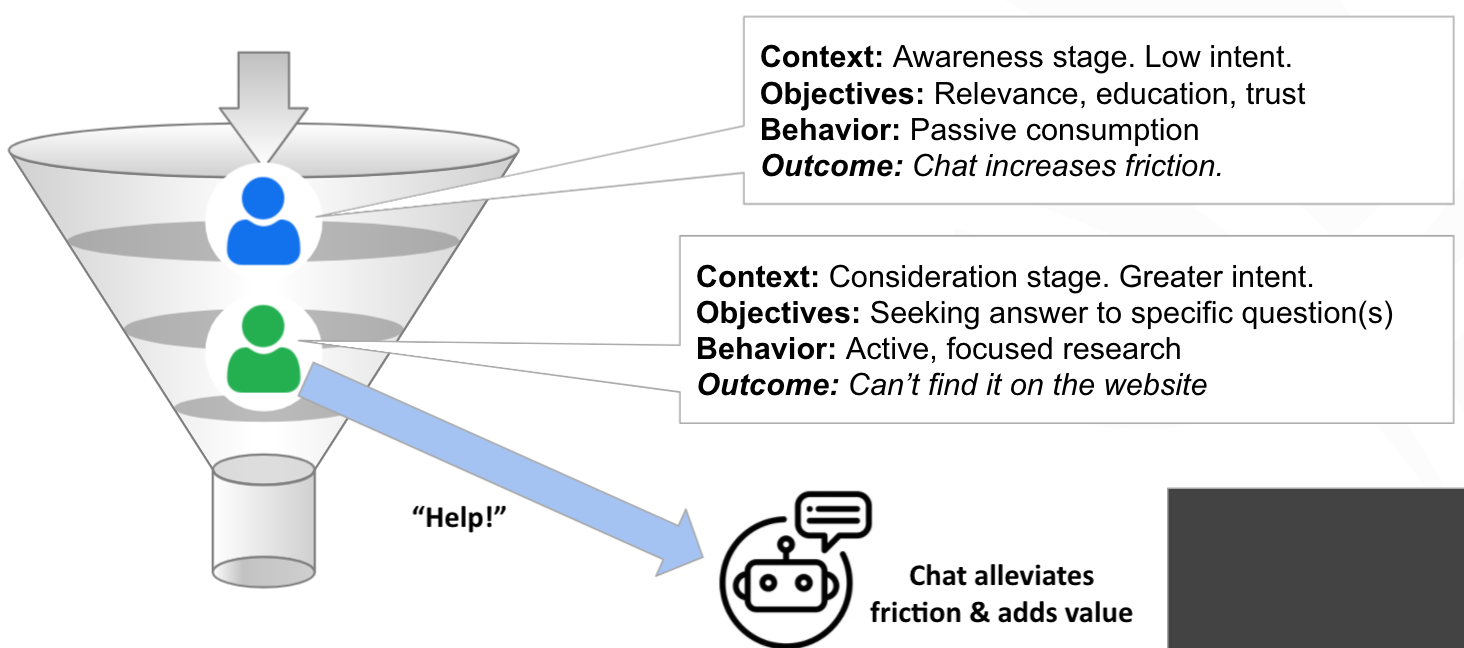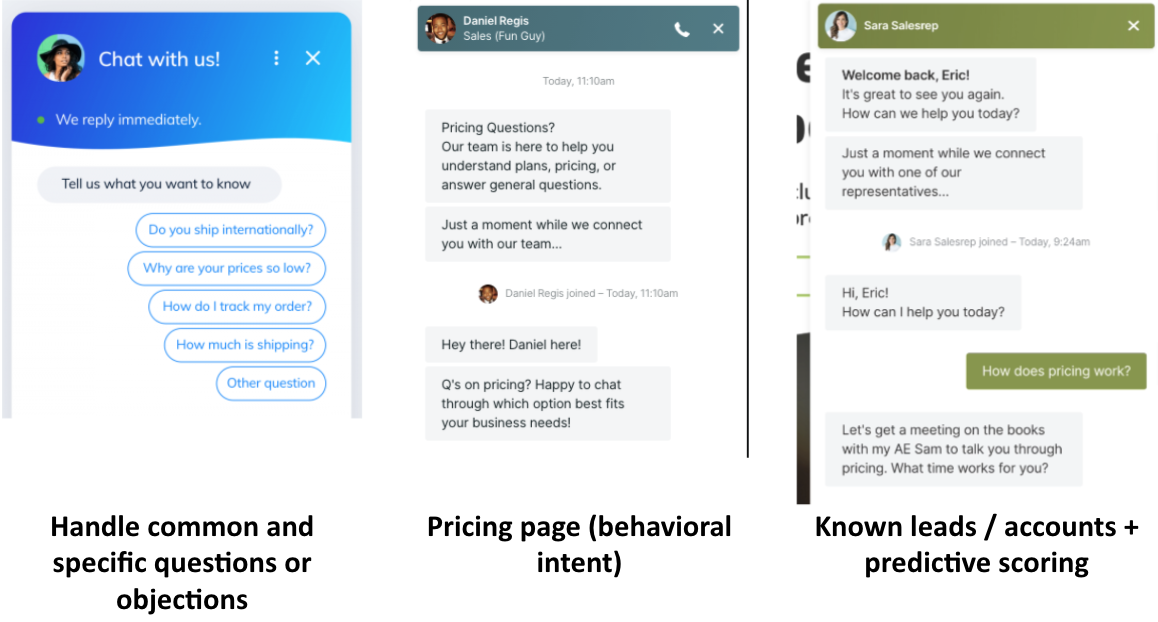Transcription
Hey everyone. I’m Arun from FunnelEnvy. I’m sure all of you are aware of conversational marketing and probably many of you have deployed chatbots on your own sites for lead capture and conversion. Now, I’ve been digging into some of the data around them myself and I wanted to share some more that I learned along the way along with some hypotheses on how you might be able to improve conversational marketing performance on your own funnel. So let’s get started. I wanted to establish some shared context first. Now, web chat on B2B and demand generation sites used to be used primarily for customer support, but increasingly whether it’s because of actual results or FOMO, you see the chat widgets all over the place as part of the revenue funnel.

Let’s start with some shared context. Webchat on b2b & demand gen sites used to primarily be for customer support. Increasingly, whether it’s because of actual results or FOMO you see the chat widgets all over as part of the revenue funnel. Conversational marketing presents an alternative to the website funnel & forms to engage visitors in what is supposed to be a more human, interactive medium.
Does conversational marketing actually work?
The Google featured snippet here tells us that it’s the fastest and most effective way to guide prospects through the sales funnel and that it provides an authentic experience and real value for your customers. This is despite the fact that 99% of the time it’s a bot on the other side (and everyone knows it).
Let’s start with the first customer, who uses Drift on their site.
Customer Engagement with Drift

First up we’ve got a customer who uses Drift on their site. Now, we’re going to be looking at the engagement and conversion metrics based on the number of new visitors coming to the site over a certain time period and using the metrics that each platform sends to Google Analytics. Now, as you can see here, this site isn’t doing too well when it comes to chatbot engagement, less than half a percent of visitors are actually engaging with the Drift bot, but it’s doing even worse when you look at the email and phone number capture rates, less than a 10th of a percent. When you compare that to the form baseline, contact us form in this case, it’s certainly outperforming the chat experience.
Conversion with Qualified.

When we look at another customer who happens to have Qualified, we see pretty similar results. In this case, again, we’re seeing a small fraction of visitors engage with the chatbot and of those that do, we see a pretty small percentage actually proceed to book a meeting or give their email address. Again, when we look at the form conversion rates, in this case, it’s a request a demo form, it significantly outperforms the qualified chatbot.
But of course, I’ve just been showing you top of the funnel numbers and this is demand generation. So it would be a mistake to only focus on the top of the funnel leads. So in the third example, let’s fit a customer that is Intercom and take a few steps further down the funnel. Now, the top of the phone numbers looks pretty similar. The baseline contacts us form outperforms the chatbot for lead conversion. However, in this case, we segment it by known leads and try to evaluate the effect of engagement with Intercom on the conversion to pipeline or opportunity. And what’s interesting here is we get about 10% of the 4,600 or so known leads engage with Intercom.

So a small number of engaging with Intercom, but those that do convert to pipeline at a much higher rate than the leads that did not have any Intercom interaction. So what can we observe from all of this? Well, despite the fact that Drift used to tell us that forms are dead, from this data here, they clearly are. In the data that we looked at, the top of the funnel engagement with chat is relatively low on an absolute basis and the forms on the site, static web forms outperform chat for lead conversion. But both from the example that I showed you as well as conversations that I’ve had with other marketers, chatbots can have a significant impact lower in the funnel on lower-funnel leads and accounts and their conversion to the pipeline.
Observations
So how do we think about this? Well, like everything on your site experience is all about the friction for the visitor and the value that you’re providing. It’s important to recognize that conversational marketing and chat are a form of interruption marketing. The question you need to ask yourself, of course, is, is that interruption adding or removing friction from the buyer’s journey? So some ways to think about that in the context of your visitors are, what is the context of buying stage and intent of that visitor? What are they actually trying to accomplish in that session on your site? How does that impact and affect their behavior? And finally, what value will interrupt that experience with chat have on their experience and their objectives?
So we can make this a little bit more concrete by considering visitors at various stages of your funnel or buyer journey. Starting with that top-of-the-funnel visitor, they’re typically in an awareness stage with relatively low commercial intent. Now in this stage, visitors are first trying to figure out if what you are selling on your site is even relevant to them and then maybe educating themselves and seeing if they can trust you for a future commercial decision. Now, this type of behavior is characterized by passive content consumption, and introducing or interrupting that experience with chat is likely to increase their friction in that experience.

And let’s contrast that with a lower-funnel visitor that is in the consideration or decision stage that has greater commercial intent. Typically, they’re seeking answers to very specific questions on your site. And unlike passive consumption, they’re actively trying to answer that question, and then they’re doing some focused research. And if they can’t find it on your site, that introduces friction. So in this case, reaching out to chat can actually add value by alleviating that friction of not being able to find the answer to the question on your site and connect them either with a bot or with a salesperson.
Conversations shouldn’t be limited to chatbots
So how do we think about this to improve our conversational experiences? Well, first off, when we think about the top of the funnel, recognize that the concepts of conversational marketing don’t have to be limited to chatbots. They become synonymous with chatbots, but conversations are how we as humans engage with other humans and the traditional static website form which asks for all sorts of personal information upfront is daunting. And that’s why we see a lot of conversion drop-off. But we can adapt that form to be more conversational in nature, more interactive. And when we do that through our multi-step forms at FunnelEnvy and we’ve tested these, we average about 53% improvement in lead conversion.
Strategic Interruptions
This obviously is the added benefit of keeping the visitor on the site experience on the page and presenting less of an interruption than the chatbot. If you’re going to try this yourselves, we recommend leading with some easy-to-answer questions to establish both intent and conversion momentum. Typically two to three questions, initially not asking for personal information, making them very relevant to the visitor and also setting proper expectations along the way, both in terms of the steps that they have to go through and the outcome when they fill out that form.

Now, when you do choose to interrupt with chat, do it strategically, don’t settle for the standard out-of-the-box transcripts that you get, welcome to our site, do you have any questions? You can be very effective with the chat by understanding and answering and handling common or, and specific questions or objections from that visitor. If you can identify visitors with specific intent and a common example is if they’re on the pricing page lingering there, they usually have a specific question and are close to making a decision. You can very effectively intercept them, interrupt them with chat and answer those questions, or even connect them to a sales person to get them over the line.
Of course, they don’t have to be on a specific page. You can use data to identify known leads, target accounts, even use real-time predictive scoring to identify those high-value, high intent visitors and answer their questions and get them in front of a salesperson faster. One thing to think about might be to reduce the interruption by have them opt into that chat experience through an online and onsite CTA.
Key Takeaways
First off, know your own numbers. I presented some examples from what I observed, but certainly, you should know your own chat and conversational marketing engagement and conversion rates, not just at the top of the funnel, but all the way through by buyer stage and to opportunity and revenue.
Secondly, recognize that forms aren’t dead. And you can apply those same interactive conversational marketing principles outside of your chatbot and to your onsite experience. When you do choose to interrupt, do it strategically, check, and be very effective to handle common questions and intercept those high-value, lower-funnel leads and accounts.
And finally, recognize that not everyone is going to engage with chat even further down the funnel. So there are ways to use the investment in chat to improve your onsite experience. You can do that by studying your chat transcripts, understanding the common questions, objections that your visitors have, and testing different site experiences to better meet those.
If you’re going to go to the trouble of targeting lower funnel visitors with chat, you can also use that to personalize the site experience and change your offers and content to better meet the expectations and needs of your lower funnel visitors. So with that, I want to thank you for listening today.



